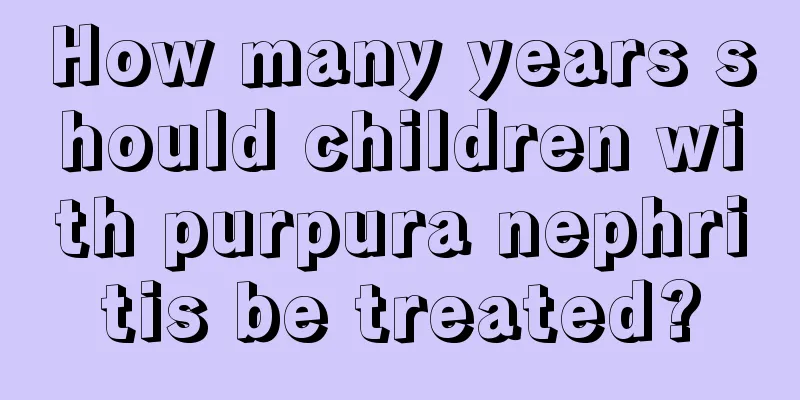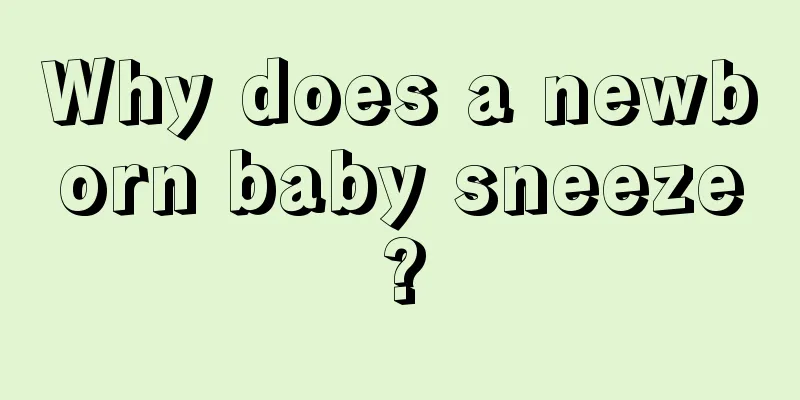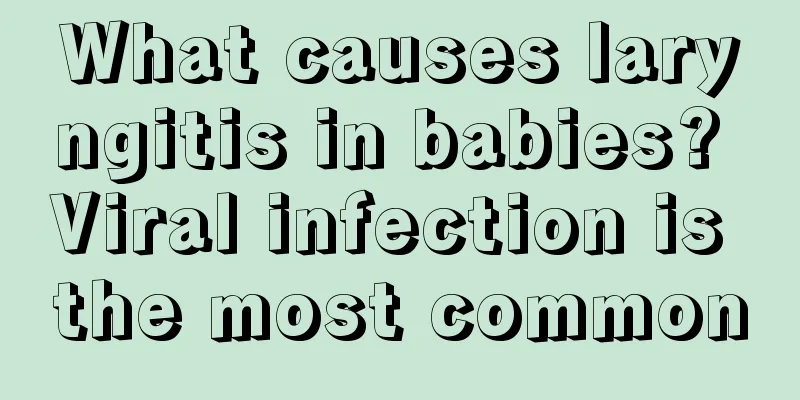How many years should children with purpura nephritis be treated?

|
Purpura is a disease that is quite harmful to the human body. People with purpura usually experience various symptoms, such as subcutaneous bleeding. The kidney is the most important organ in the body. The kidney can control the body's detoxification. If there is a problem with the kidney, some diseases will follow. Purpura nephritis is a relatively serious disease that requires long-term treatment before gradual recovery. So how many years does it take to treat children's purpura nephritis? Purpura nephritis in children usually presents with hematuria and proteinuria in the acute phase. As purpura is controlled, the urine protein in most children will gradually turn negative. However, since Henoch-Schönlein purpura itself is a small vessel vasculitis, most patients with purpura nephritis will have long-term positive urine occult blood. If regular urine protein tests show negative results and only occult blood, there is no need for excessive treatment. Pay attention to avoiding factors of kidney damage such as infection, inappropriate medication, etc. Regular check-ups are sufficient. According to different classification standards, there are three classification methods for childhood purpuric nephritis: ① Clinical classification of childhood purpuric nephritis, which is mainly based on the common clinical symptoms of children with purpuric nephritis; ② Pathological classification of childhood purpuric nephritis, which is mainly based on pathological changes after light microscopy of renal biopsy; ③ Immunopathological classification of childhood purpuric nephritis, which is mainly based on the deposition of immune complexes after fluorescent examination of renal biopsy, and is divided into IgA; IgA+IgG; IgA+IgM; IgA+IgG+IgM. Purpura nephritis is a partial clinical manifestation of Henoch-Schonlein purpura. Renal symptoms may occur at any stage of the course of Henoch-Schonlein purpura, but most of them appear 2 to 4 weeks after Henoch-Schonlein purpura. They may also appear after the rash subsides or in the dormant stage of the disease. The main manifestations are macroscopic hematuria or microscopic hematuria and proteinuria. The severity of the disease varies, and severe cases may cause renal failure and hypertension. 1. Clinical classification Referring to the draft developed by the Nephrology Group of the Pediatric Branch of the Chinese Medical Association at the Zhuhai Conference in 2000, combined with the clinical characteristics of children with purpura nephritis, children with purpura nephritis were initially divided into 6 types: (1) Normal urine test: No abnormality was found in multiple urine routine tests; (2) Isolated hematuria or proteinuria Hematuria criteria: Macroscopic hematuria or microscopic hematuria RBC (red blood cells) > 5/HP; proteinuria: urine protein positive but 24-hour quantitative daily < 50 mg/kg (clinically presents as hematuria or proteinuria alone); (3) The criteria for hematuria and proteinuria are the same as above, mainly referring to the child with mixed proteinuria and hematuria as the main clinical feature; (4) Acute nephritis type with 2 of the 3 symptoms of hematuria, hypertension, and azotemia; (5) Nephrotic syndrome type 24h urine protein>50mg/kg, with or without hypoproteinemia and hyperlipidemia; (6) Acute nephritis with massive proteinuria (24h urine protein>50mg/kg), and 2 of the 3 symptoms of hematuria, hypertension, and azotemia. 2. Pathological grading After renal biopsy and light microscopy, pediatric purpuric nephritis is divided into 6 grades: (1) Grade I minimal change disease; (2) grade II simple mesangial proliferation; (3) Grade III mesangial proliferation with <25% crescent formation and/or glomerular sclerosis (a focal; b diffuse); (4) Grade IV mesangial proliferation with 25% to 50% crescent formation or glomerular sclerosis (a focal; b chronic); (5) Grade V mesangial proliferation with <75% crescent formation or glomerular sclerosis; (6) Grade VI mesangial proliferation with >75% crescent formation or glomerular sclerosis, or membranoproliferative glomerulonephritis changes. 3. Immunopathological classification Through immunoenzyme/fluorescence examination of renal biopsy specimens, childhood purpuric nephritis can be divided into four types according to the different immune complexes deposited in the glomeruli. The above are three different types of purpuric nephritis in children. These three types are not isolated but interrelated. That is, the damaged renal tissue of children with purpuric nephritis undergoes pathological changes: mesangial damage, crescents, and glomerular sclerosis. These lesions in the kidneys cause clinical symptoms in children such as hematuria, proteinuria, hypertension, etc. |
<<: Irregular menstruation at the age of 12
>>: Should Helicobacter pylori be treated in children?
Recommend
Five-month-old baby's brain is nourished, and dietary conditioning has a good effect
For a five-month-old baby, you can eat a moderate...
What causes dark circles under baby's eyes?
Speaking of dark circles, everyone knows that it ...
Is bedwetting a disease in children?
Bedwetting is something that every child experien...
How to deal with toddler temper tantrums
Children nowadays are the big treasures of the fa...
Jaundice index at 9 months
Neonatal jaundice is a relatively common disease....
Tips for constipation for seven-month-old babies
Seven months is a critical period for the develop...
What is better for children to eat to nourish their brains?
The healthy growth of children is the ardent hope...
The best time to remove six fingers of infants
Not all babies are healthy when they are born. Fo...
Can the red birthmark on the back of a newborn's head be removed?
Birthmarks are very common and most people will h...
What kind of snacks are harmful to two-year-old children?
In daily life, many parents think that giving the...
What to do if a child coughs without phlegm
Some children have coughing problems, which serio...
Why does my 10-month-old baby have a runny nose due to a cold?
Ten-month-old babies have relatively poor resista...
Introduction to baby seborrheic dermatitis
Many friends may not know that seborrheic dermati...
At what age should babies undergo surgery for short lip frenulum?
It is a very common phenomenon for children to ha...
What’s going on if my child has bubbles in his throat?
The baby has bubbles in his throat. This is mostl...









